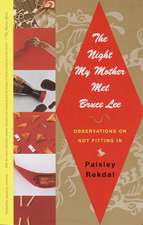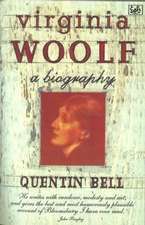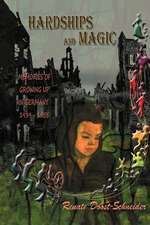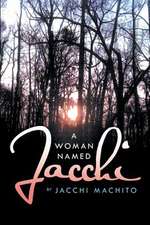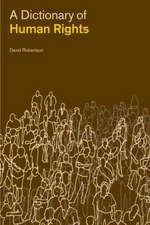Denmark Vesey: The Buried Story of America's Largest Slave Rebellion and the Man Who Led It
Autor David Robertsonen Limba Engleză Paperback – 31 iul 2000
Denmark Vesey was a charasmatic ex-slave--literate, professional, and relatively well-off--who had purchased his own freedom with the winnings from a lottery. Inspired by the success of the revolutionary black republic in Haiti, he persuaded some nine thousand slaves to join him in a revolt. On a June evening in 1822, having gathered guns, and daggers, they were to converge on Charleston, South Carolina, take the city's arsenal, murder the populace, burn the city, and escape by ship to Haiti or Africa. When the uprising was betrayed, Vesey and seventy-seven of his followers were executed, the matter hushed by Charleston's elite for fear of further rebellion. Compelling, informative, and often disturbing, this book is essential to a fuller understanding of the struggle against slavery.
Preț: 86.98 lei
Nou
Puncte Express: 130
Preț estimativ în valută:
16.65€ • 17.16$ • 14.05£
16.65€ • 17.16$ • 14.05£
Carte disponibilă
Livrare economică 10-24 februarie
Preluare comenzi: 021 569.72.76
Specificații
ISBN-13: 9780679762188
ISBN-10: 0679762183
Pagini: 222
Ilustrații: 8 PAGES OF ILLUSTRATIONS
Dimensiuni: 132 x 204 x 16 mm
Greutate: 0.25 kg
Ediția:Vintage Books.
Editura: Vintage Publishing
ISBN-10: 0679762183
Pagini: 222
Ilustrații: 8 PAGES OF ILLUSTRATIONS
Dimensiuni: 132 x 204 x 16 mm
Greutate: 0.25 kg
Ediția:Vintage Books.
Editura: Vintage Publishing
Notă biografică
David Robertson is the author of a biography of James F. Byrnes and Booth: A Novel. He lives in La France, South Carolina.
Extras
From Chapter One
A black slave stepped upon the ground that would later be the district of Charleston. In early April 1670, the 220-ton frigate Carolina, six months out from the island of Barbados, entered the waters forming what is now Charleston Harbor. The ship sailed up a shallow river to a point overlooked by a heavily wooded bluff, and there about twenty white Barbadians disembarked as part of the first permanent English-speaking settlement in South Carolina. Although no one recorded the name, the Barbadians had brought with them a black slave to work the new colony.
Slavery thus was present from the beginning in South Carolina, uniquely among the North American colonies, where in all other cases it was introduced only after their founding. And for the next two centuries, South Carolina would maintain its preeminence. From the arrival of the white men from Barbados in the seventeenth century to the U.S. prohibition of slave importation in 1807, over one-fourth of all African slaves brought and sold into the United States--at least 132,918 people--entered through Charleston or one of South Carolina's lesser ports. Hence, among the current African-American population of the United States in the late twentieth century, roughly one in four has an ancestor who was sold as a slave at Charleston.
There is no reason to think these figures would have displeased the men from Barbados as the Carolina found slippage between the trees at the riverbank. They had come to South Carolina intending to grow rich on a slave economy, just as had their fathers on the small island they had left.
Barbados, a piece of "sixpence throwne down" upon a sailor's map of the eastern Caribbean, as one contemporary chronicler described it, was at the time of the Carolina settlement the most densely populated, the richest, and the most lethal of the English colonies in the New World. Established less than fifty years before the Carolina expedition, Barbados also was the first English colony to introduce the gang-labor system of black slavery into the New World. Rather than encouraging the immigration of a free peasantry, the early settlers chose to import African slaves to work the sugar fields which they were clearing on this once rain-forested Caribbean island. Barbadians, as this first generation of Englishmen called themselves, became known throughout the Caribbean as hard masters. They imposed their will upon their new African laborers by frequent floggings, brandings, and mutilations; and by thus coercing large gangs of slaves to repeat monotonously the same task for ten or eleven hours--slashing the sugarcane with curved knives, grinding the canes between heavy stones, then boiling out the dark molasses to produce crystallized white sugar--the Barbadians became rich.
By mid-century, Barbados was contributing nearly half of the refined sugar sent to the European market, and it had become the first English settlement to have formed a plantation ruling class. Within two generations, this island with a population in 1660 of forty thousand blacks and whites had produced a planter elite of about sixty-two families who controlled local politics, held the most arable land, and owned the most slaves. Practically all the European visitors to the island in the seventeenth century remarked upon the display of wealth and extravagant consumption of the Barbadian elite--behavior to be repeated, as several scholars of the South have noted, by their South Carolina descendants into the lifetime of Denmark Vesey. There was to be in common between these two ruling classes in the Caribbean and in South Carolina that same show of finery, sometimes even to the point of ostentatiousness, evident in both their choice of clothing and their lavishly furnished country estates; there was to be that same easy munificence among the ruling males in bestowing honorary militia titles upon one another, such as "Captain" or "Major." And there also was to be transported to Carolina that same unhesitating brutality, and an absolute conviction that slavery represented the most profitable economic system yet known to Western man.
The slave-generated wealth of Barbados came at an appalling cost in African lives. Throughout the seventeenth century, the island had one of the highest mortality rates for blacks in the Western Hemisphere, and, whether from disease, malnutrition, or torture, more died annually than were imported to work the great sugar plantations. Unlike their English contemporaries in Massachusetts, Barbadians seldom looked inward to their consciences, and so long as the supply of African slaves seemed illimitable, their economy appeared untroubled. What concerned the masters was the lack of arable land on which to expand their slave economy. Barbados is only 21 miles long and 14 miles wide, and with practically all of it under cultivation and concentrated within a few families, economic advancement, particularly for younger men, was limited. Accordingly, a group declaring themselves the Corporation of Barbados Adventurers wrote to England on August 12, 1663, offering to establish a colony in the unsettled lands south of Virginia, an area that had become known as "Carolina in ye West Indies."
The Barbadians promised the eight royal proprietors to expect not only "the aptness of the people here"
for establishing a new plantation economy in North America but also a "number of there negroes and other servants fitt for such labor." For six years, the proprietors and the Adventurers negotiated their terms, but ultimately the Barbadian proposal financially enticed the English proprietors. A mainland colony could be supplied and populated much more cheaply from the existing plantations at Barbados than from Europe; accordingly, the proprietors ceded to the Corporation of Barbados Adventurers the exclusive right to settle Carolina with grants of 150 acres to each Adventurer, with an additional 150 acres granted him for each servant transported. The philosopher John Locke, secretary to one of the proprietors, devised an elaborate constitution for the new colonists, a copy of which the Barbadian Adventurers carried with them. Among other stipulations, it promised religious freedom to all residents of the colony, whether black or white. In late 1669, three ships carrying colonists sailed from Barbados, of which only one, the Carolina, bearing its black slave with an unrecorded name, succeeded in reaching the new colony on the South Atlantic coast.
From the Hardcover edition.
A black slave stepped upon the ground that would later be the district of Charleston. In early April 1670, the 220-ton frigate Carolina, six months out from the island of Barbados, entered the waters forming what is now Charleston Harbor. The ship sailed up a shallow river to a point overlooked by a heavily wooded bluff, and there about twenty white Barbadians disembarked as part of the first permanent English-speaking settlement in South Carolina. Although no one recorded the name, the Barbadians had brought with them a black slave to work the new colony.
Slavery thus was present from the beginning in South Carolina, uniquely among the North American colonies, where in all other cases it was introduced only after their founding. And for the next two centuries, South Carolina would maintain its preeminence. From the arrival of the white men from Barbados in the seventeenth century to the U.S. prohibition of slave importation in 1807, over one-fourth of all African slaves brought and sold into the United States--at least 132,918 people--entered through Charleston or one of South Carolina's lesser ports. Hence, among the current African-American population of the United States in the late twentieth century, roughly one in four has an ancestor who was sold as a slave at Charleston.
There is no reason to think these figures would have displeased the men from Barbados as the Carolina found slippage between the trees at the riverbank. They had come to South Carolina intending to grow rich on a slave economy, just as had their fathers on the small island they had left.
Barbados, a piece of "sixpence throwne down" upon a sailor's map of the eastern Caribbean, as one contemporary chronicler described it, was at the time of the Carolina settlement the most densely populated, the richest, and the most lethal of the English colonies in the New World. Established less than fifty years before the Carolina expedition, Barbados also was the first English colony to introduce the gang-labor system of black slavery into the New World. Rather than encouraging the immigration of a free peasantry, the early settlers chose to import African slaves to work the sugar fields which they were clearing on this once rain-forested Caribbean island. Barbadians, as this first generation of Englishmen called themselves, became known throughout the Caribbean as hard masters. They imposed their will upon their new African laborers by frequent floggings, brandings, and mutilations; and by thus coercing large gangs of slaves to repeat monotonously the same task for ten or eleven hours--slashing the sugarcane with curved knives, grinding the canes between heavy stones, then boiling out the dark molasses to produce crystallized white sugar--the Barbadians became rich.
By mid-century, Barbados was contributing nearly half of the refined sugar sent to the European market, and it had become the first English settlement to have formed a plantation ruling class. Within two generations, this island with a population in 1660 of forty thousand blacks and whites had produced a planter elite of about sixty-two families who controlled local politics, held the most arable land, and owned the most slaves. Practically all the European visitors to the island in the seventeenth century remarked upon the display of wealth and extravagant consumption of the Barbadian elite--behavior to be repeated, as several scholars of the South have noted, by their South Carolina descendants into the lifetime of Denmark Vesey. There was to be in common between these two ruling classes in the Caribbean and in South Carolina that same show of finery, sometimes even to the point of ostentatiousness, evident in both their choice of clothing and their lavishly furnished country estates; there was to be that same easy munificence among the ruling males in bestowing honorary militia titles upon one another, such as "Captain" or "Major." And there also was to be transported to Carolina that same unhesitating brutality, and an absolute conviction that slavery represented the most profitable economic system yet known to Western man.
The slave-generated wealth of Barbados came at an appalling cost in African lives. Throughout the seventeenth century, the island had one of the highest mortality rates for blacks in the Western Hemisphere, and, whether from disease, malnutrition, or torture, more died annually than were imported to work the great sugar plantations. Unlike their English contemporaries in Massachusetts, Barbadians seldom looked inward to their consciences, and so long as the supply of African slaves seemed illimitable, their economy appeared untroubled. What concerned the masters was the lack of arable land on which to expand their slave economy. Barbados is only 21 miles long and 14 miles wide, and with practically all of it under cultivation and concentrated within a few families, economic advancement, particularly for younger men, was limited. Accordingly, a group declaring themselves the Corporation of Barbados Adventurers wrote to England on August 12, 1663, offering to establish a colony in the unsettled lands south of Virginia, an area that had become known as "Carolina in ye West Indies."
The Barbadians promised the eight royal proprietors to expect not only "the aptness of the people here"
for establishing a new plantation economy in North America but also a "number of there negroes and other servants fitt for such labor." For six years, the proprietors and the Adventurers negotiated their terms, but ultimately the Barbadian proposal financially enticed the English proprietors. A mainland colony could be supplied and populated much more cheaply from the existing plantations at Barbados than from Europe; accordingly, the proprietors ceded to the Corporation of Barbados Adventurers the exclusive right to settle Carolina with grants of 150 acres to each Adventurer, with an additional 150 acres granted him for each servant transported. The philosopher John Locke, secretary to one of the proprietors, devised an elaborate constitution for the new colonists, a copy of which the Barbadian Adventurers carried with them. Among other stipulations, it promised religious freedom to all residents of the colony, whether black or white. In late 1669, three ships carrying colonists sailed from Barbados, of which only one, the Carolina, bearing its black slave with an unrecorded name, succeeded in reaching the new colony on the South Atlantic coast.
From the Hardcover edition.
Recenzii
"A fascinating historical detective story . . . Robertson deftly teases out tantalizing clues without pushing his speculation too far . . . [His] thoughtful chronicle restores to the record a powerful figure whose story continues to challenge America's vision of itself as a place of equality and harmony."
--Kirkus Reviews
"This book is truly something new . . . Robertson is a dogged seeker of truth with a fertile imagination . . . He disinters the secret of those who needed to bury Vesey's outrage and thereby deflect the light from their outrageous treatment of people they made slaves." --Booklist
"Robertson's well-researched narrative and smooth style make this an intelligent analysis of, as well as a worthy tribute to, his subject." --Publishers Weekly
"Compelling... A fascinating narrative."--The New York Times
"Excellent. It should not be missed by anyone." --The Baltimore Sun
"A remarkable tale...It deserves a permanent place on America's history bookshelves." --Los Angeles Times
--Kirkus Reviews
"This book is truly something new . . . Robertson is a dogged seeker of truth with a fertile imagination . . . He disinters the secret of those who needed to bury Vesey's outrage and thereby deflect the light from their outrageous treatment of people they made slaves." --Booklist
"Robertson's well-researched narrative and smooth style make this an intelligent analysis of, as well as a worthy tribute to, his subject." --Publishers Weekly
"Compelling... A fascinating narrative."--The New York Times
"Excellent. It should not be missed by anyone." --The Baltimore Sun
"A remarkable tale...It deserves a permanent place on America's history bookshelves." --Los Angeles Times
Descriere
In a remarkable feat of historical detective work, Robertson illuminates Denmark Vesey, the shadowy figure who planned a slave rebellion so daring that, if successful, it might have changed the face of the antebellum South. Compelling, informative, and often disturbing, this history is essential to a fuller understanding of the struggle against slavery. of illustrations.








